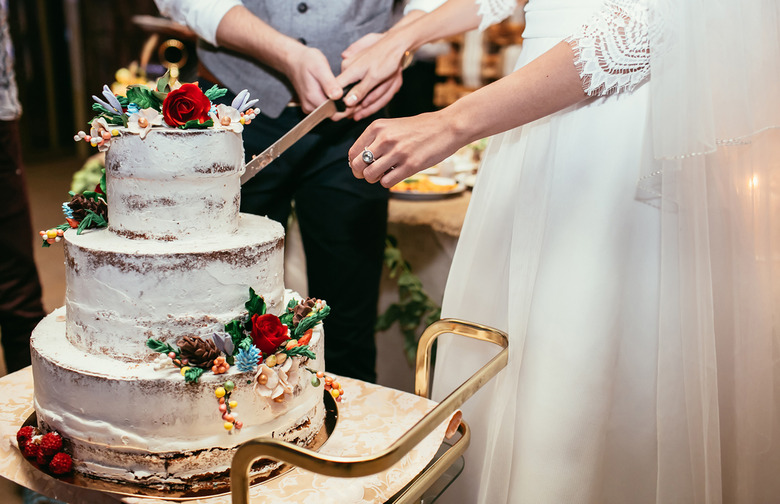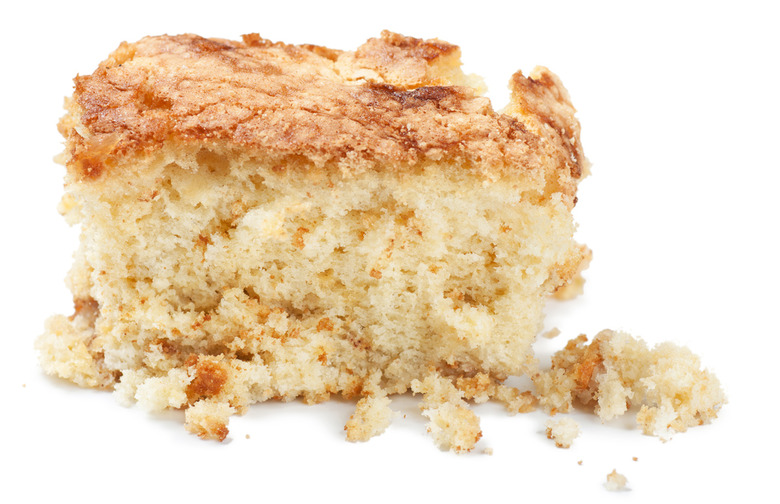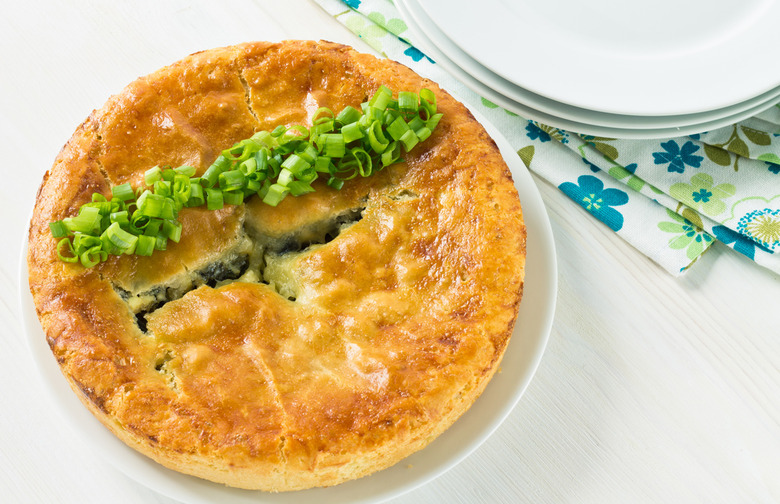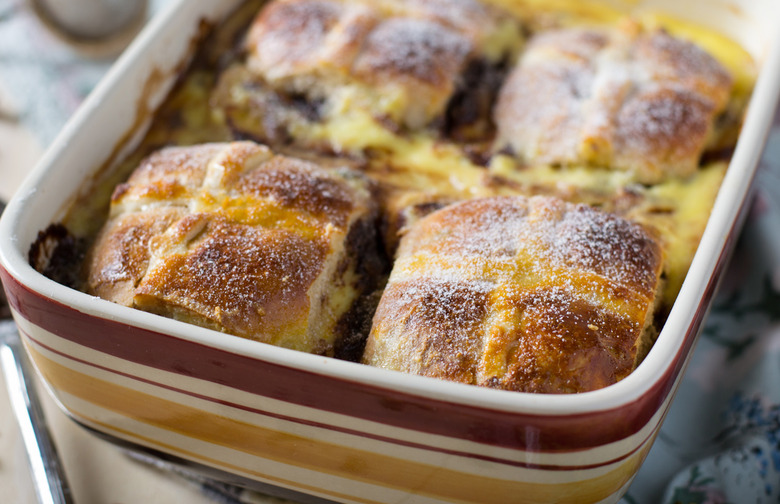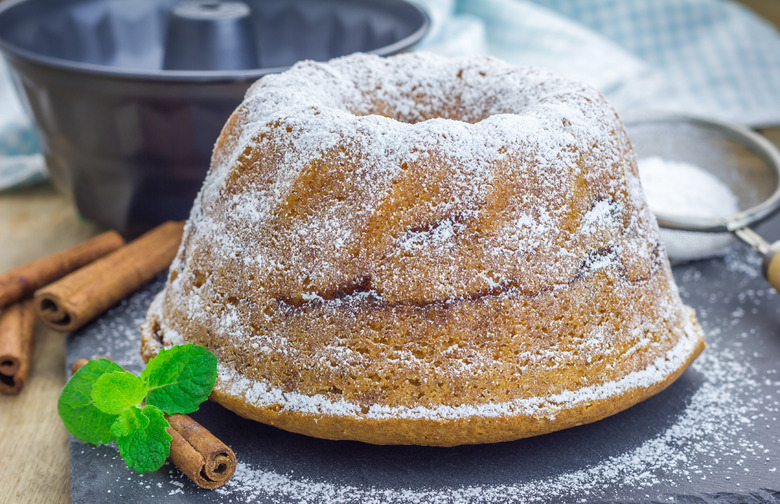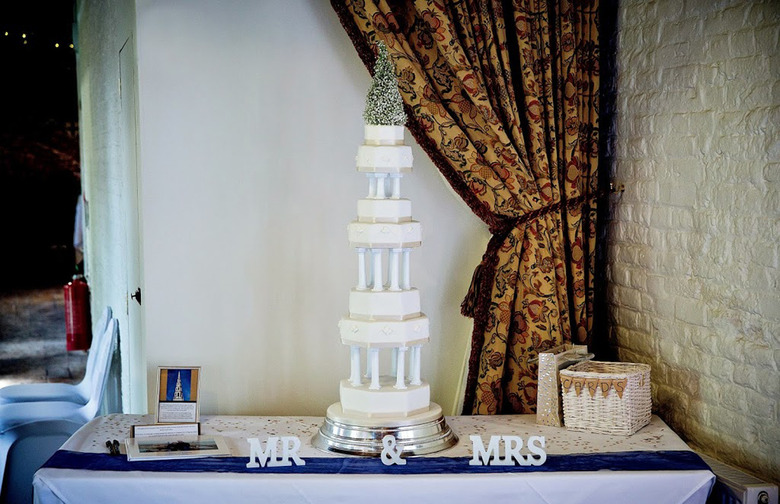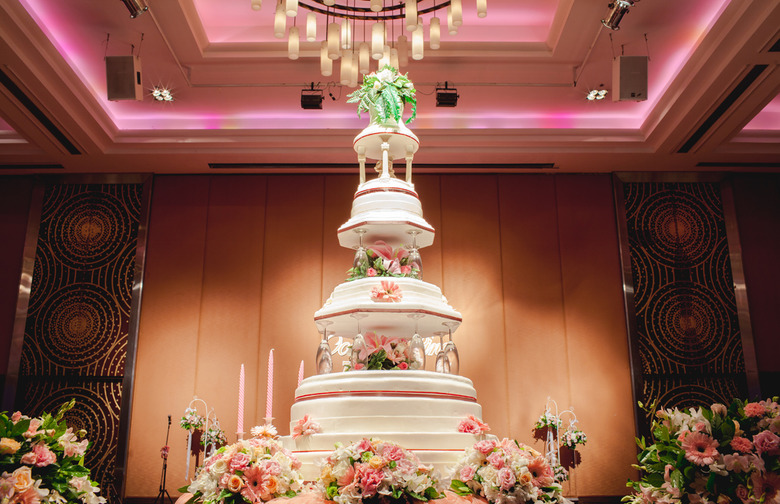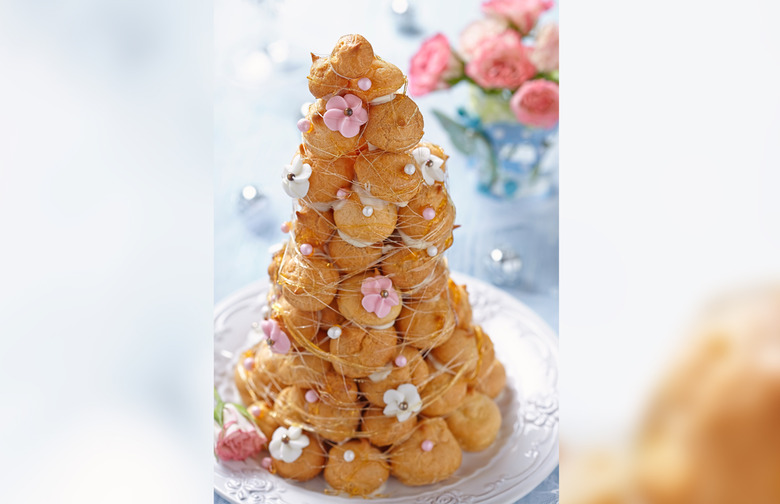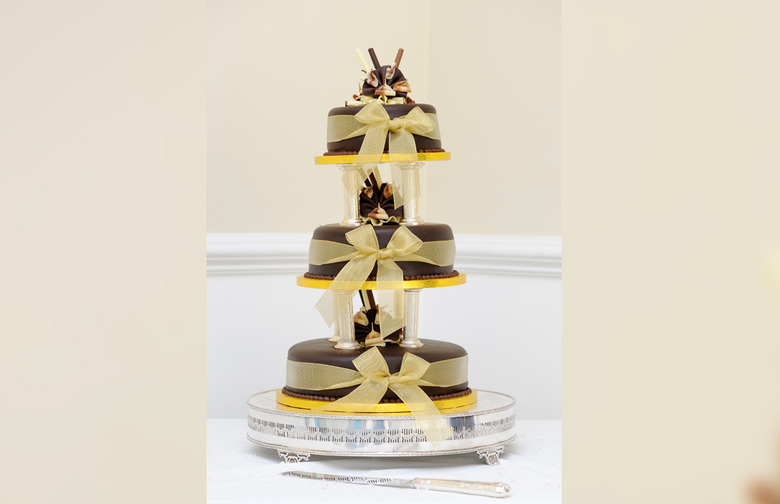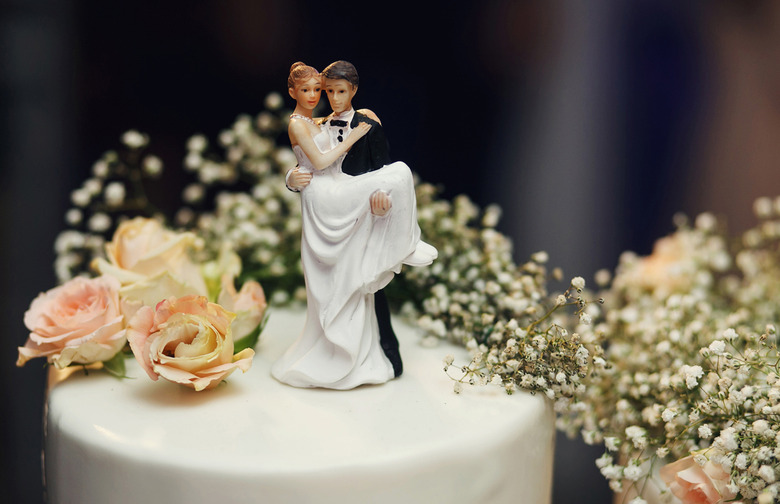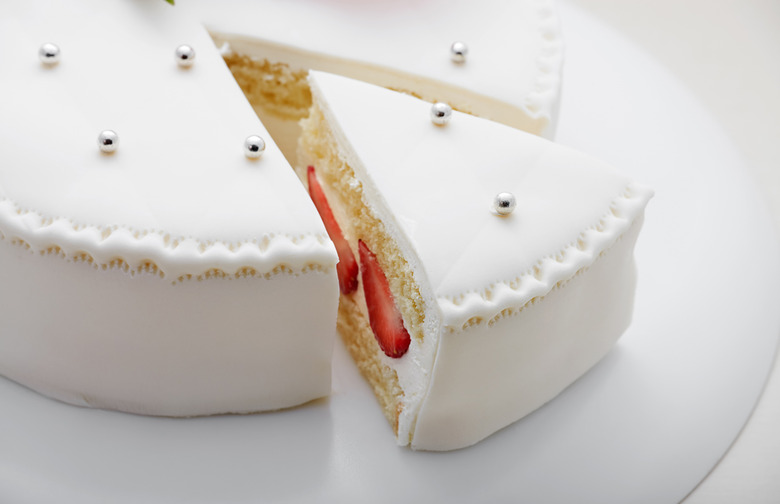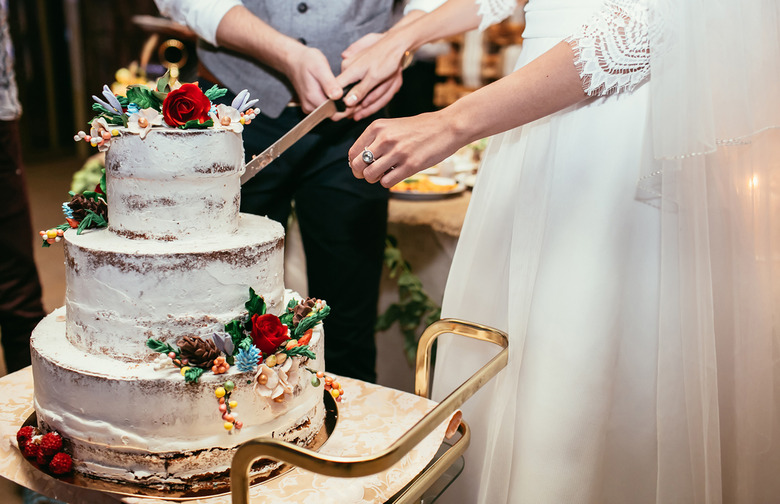You Won't Believe How Wedding Cakes Have Changed Over The Years
Unless you're a really radical bride, a wedding cake is going to be a key feature on your big day. As you try to decide between having a tower of macarons or a flower-covered sponge cake, you're continuing a matrimonial tradition that began in Roman times. Throughout history, wedding cakes have always played an important role in wedding celebrations. However, they haven't always been a beautiful, delicious, and decorative centerpiece.
Roman Wedding Cake
The Romans always broke a simple, savory cake made of either wheat or barley over the bride's head after the wedding ceremony, to wish her good luck in her marriage. The newlyweds then ate some of the crumbs together, while the guests gathered round and collected the rest from the ground. The tradition of sharing a wedding cake with your guests stems from this simple Roman act.
Medieval Bride Pie
The "bride pie" was a savory pie that could be filled with anything ranging from oysters and sweetbreads to minced meats or mutton, depending on the family's wealth. A ring was always hidden inside the pie, and the woman who found the ring in her piece was said to be the one to marry next — a precursor of today's bouquet toss. The pastry was beautifully decorated, making the pie a centerpiece of every wedding celebration.
Medieval Spiced Bun Cake
In the Middle Ages, small spiced buns were balanced one on top of the other, to create a stack that towered as high as possible. The couple had to then kiss over the top of the tall pile of buns: A successful kiss — one which didn't knock the tower down — was considered to be a symbol of a long and prosperous marriage.
17th Century Bride Cake
By the seventeenth century, the "bride pie" had become a "bride cake." These were sweet, fruit cakes, the type of wedding cake that remains the traditional option today. After a slice of this cake was eaten, as a symbol of good luck, the bride threw the remainder over her head (harking back to the Roman tradition). Towards the end of the 1700s, it became more common for the "bride cake" to be covered in a white meringue-like icing to symbolize purity.
18th Century St Bride’s Church Cake
Rumor has it that the tiered wedding cake shape that we now consider to be a classic wedding cake, was first created by a baker's apprentice in London. This apprentice fell in love with his boss's daughter and wanted to impress her with a stunning wedding cake. He took his inspiration from the tiered spire of nearby, and aptly named, St. Bride's Church. Although this structure led the way for wedding cakes from this date onwards, the baker had not yet created a way of making all the tiers of this groundbreaking cake edible.
19th Century Royal Icing
Although white icing had been used on cakes since the seventeenth century, it wasn't until Queen Victoria's wedding to Prince Albert in 1840 that royal icing was created. A hard, sturdy, white icing which could support her ornately decorated, nine-foot wide wedding cake was required. It was at this royal wedding that this icing earned its name.
20th Century Croquembouche
While the British were creating tiered, white cakes, the French were celebrating their weddings with towering croquembouches. Said to first be created by baker Marie Antoine Carême, who was inspired by the towering spice cakes seen years earlier in Britain, these small, circular choux pastries were piled high on a nougat base and beautifully decorated with spun sugar. In the late nineteenth century, these took elaborate forms, such as a Turkish fez or a Gothic tower, but by the twentieth century they had returned to a classic conical structure, which is still popular at weddings today.
20th Century Tiered Wedding Cake
The first entirely edible tiered wedding cake was one made for the marriage of Prince Leopold to Princess Helene Freiderike in 1882. The hardened layers of royal icing which covered each sturdy fruit cake allowed the tiers to securely stack on top of each other. The use of supporting pillars between the wedding cake tiers was first seen in 1900, as a result of the demand for a wedding cake to be entirely edible, and also ever-increasingly wide and tall. These pillars were simple wooden sticks covered in icing, and the use of them in a wedding cake was an important status symbol: The taller the wedding cake, the better.
1940s Cake Toppers
Wedding cake toppers first appeared in the 1940s. These small figurines sat atop the traditional tiered fruit cakes, and were the start of a fashion for astounding amounts of both edible and inedible cake decorations.
1950s Post-War Cake Decorations
In the 1950s, when sugar and other ingredients were once again more readily available, the style of wedding cakes rapidly expanded and grew. A royal icing that could be molded was invented, which allowed for spectacular and intricate cake decorations. It was also at this time that the couples started moving away from a traditional fruit cake, towards different sponge cakes such as chocolate, vanilla, lemon, or even carrot.
Today’s Fashion-Forward Wedding Cakes
From here on, wedding cakes have followed fashion. While most couples still opt for a cake that is tiered in some way — whether it's a five-tiered sponge, layers of cupcakes, or a stack of meringues — it really is the case that anything goes. Whether you're a macaron obsessive and create a rainbow-colored tower of these beautiful French sweets, or you have a cake delicately iced in varying shades of buttercream, or you choose the natural 'naked cake' look, wedding cakes remain an important wedding centerpiece, and carry a significant amount of symbolism and history with them.
